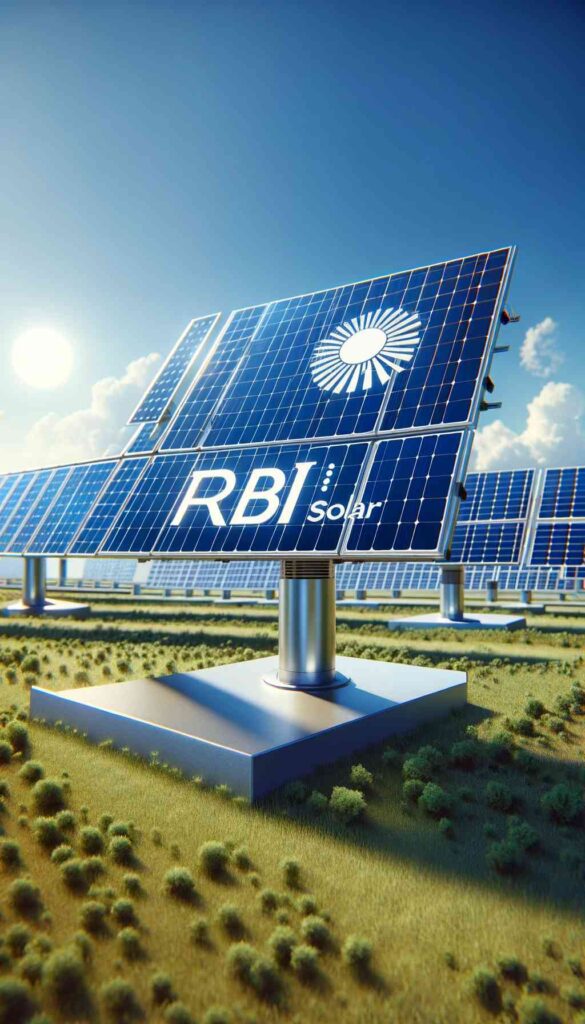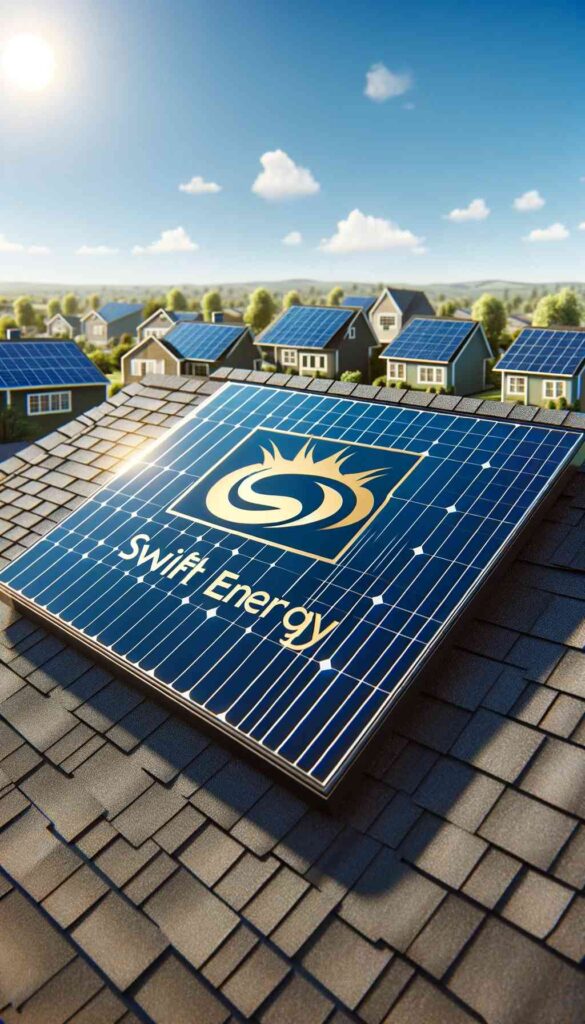
Key Takeaways
- Solar ROI measures the financial return on your solar panel investment, typically offering around a 10% return.
- Initial installation costs can range from $15,000 to $25,000 before incentives, significantly affecting ROI.
- Local electricity rates and available incentives, such as federal tax credits, play an important role in determining ROI.
- Geographic location affects sunlight exposure, impacting energy production and, consequently, ROI.
- Understanding and calculating the payback period helps in assessing the time needed to recoup your investment.
Understanding Solar ROI and Its Importance
When you decide to invest in solar panels, understanding your return on investment (ROI) is essential. This metric tells you how much profit you’ll earn relative to the cost of your solar system. It’s like getting a report card on your financial decision, helping you see if going solar is really worth it. Most importantly, it guides you in making informed choices about your energy future.
Defining Solar ROI
Solar ROI is essentially the percentage of your investment that you will recover through savings on your electricity bills over the system’s lifespan. To put it simply, it’s the measure of how much you gain from installing solar panels compared to what you initially spend. For example, if you invest $20,000 in solar panels and save $2,000 annually on your electricity bills, your ROI would be the savings divided by the initial cost, expressed as a percentage.
Why Solar ROI Matters
Understanding solar ROI is not just about numbers; it’s about making smart financial decisions. By calculating your ROI, you can determine how long it will take to recoup your initial investment and start making a profit. This knowledge empowers you to evaluate whether solar energy aligns with your financial goals and sustainability objectives. Plus, a clear grasp of ROI helps you compare different solar options and choose the one that maximizes your benefits.
Factors Impacting Solar ROI
Several factors influence the ROI of your solar panel investment. By understanding these, you can better anticipate the financial outcomes and make decisions that enhance your returns.
Initial Installation Costs
The upfront cost of solar panel installation is one of the most significant factors affecting ROI. This includes the cost of the panels themselves, labor, permits, and any additional equipment needed. Typically, these costs can range from $15,000 to $25,000, depending on the size and complexity of the system. It’s essential to shop around and get quotes from multiple providers to ensure you’re getting the best deal.
Local Electricity Rates
Your local electricity rates greatly influence your solar ROI. The higher your current electricity rates, the more you save by switching to solar. This is because you offset a larger portion of your energy bill, increasing your savings. For instance, if you live in an area with high electricity costs, your ROI will likely be higher compared to areas with lower rates. It’s important to check your local rates and consider how they might change over time.
Geographic Location and Sunlight Exposure
Where you live significantly impacts the effectiveness of your solar panels. Areas that receive more sunlight will naturally produce more energy, thus offering a better ROI. For instance, sunny states like Arizona or California typically see higher returns compared to regions with less sun exposure like the Pacific Northwest. Understanding your geographic location is vital when calculating your potential savings and ROI.
The orientation and tilt of your solar panels can also affect energy production. Ideally, panels should face south and be tilted at an angle that maximizes sun exposure throughout the year. If your roof doesn’t allow for optimal placement, consider solar tracking systems that adjust with the sun’s movement to enhance your ROI.

Steps to Calculate Solar ROI
Calculating your solar ROI involves several steps that help you understand the financial benefits of your investment. By following these steps, you can gain a clearer picture of your potential savings and the time it will take to recoup your costs.
Step 1: Determine Total Costs and Subtract Incentives
First, calculate the total cost of your solar installation. This includes the price of the panels, installation fees, permits, and any additional equipment. Once you have this figure, subtract any available incentives, such as federal tax credits or local rebates. For example, the federal solar tax credit currently allows you to deduct 30% of the installation cost from your federal taxes. This step helps you understand the net cost of your solar investment.
Step 2: Calculate Annual Savings on Energy Bills
Next, estimate how much you’ll save on your energy bills each year. To do this, review your current electricity usage and rates, and compare them to the expected output of your solar system. Typically, solar panels can reduce your energy bills by 50% to 100%, depending on the size of your system and your energy consumption habits. Keep in mind that energy rates tend to increase over time, which can further enhance your savings and ROI.
For example, if your annual electricity bill is $1,200 and your solar panels reduce this cost by 75%, your annual savings would be $900. These savings directly contribute to your ROI, making it essential to accurately estimate this figure.
Step 3: Estimate System Lifespan and Output
Solar panels typically have a lifespan of 25 to 30 years, with most manufacturers offering warranties that guarantee performance for at least 20 years. To calculate your ROI, estimate the total energy output over the system’s lifespan. This involves considering factors like panel efficiency, degradation rates, and local weather conditions. By understanding how much energy your system will produce over time, you can better assess its financial benefits.
Step 4: Understanding the Payback Period
The payback period is the time it takes to recoup your initial investment through energy savings. To calculate this, divide your net installation cost by your annual energy savings. For instance, if your net cost is $14,000 and you save $1,400 annually, your payback period would be 10 years. After this period, any savings you generate contribute directly to your ROI, effectively providing “free” energy for the remainder of your system’s lifespan.
Maximizing Your Solar Investment
To get the most out of your solar investment, it’s essential to take steps that enhance your system’s efficiency and financial returns. By making informed decisions and optimizing your setup, you can maximize your ROI and enjoy greater savings over time.
Choosing the Right Size and Type of System
Selecting the appropriate size and type of solar system is important for maximizing your ROI. A system that’s too small won’t cover your energy needs, while an oversized system may lead to unnecessary expenses. Work with a reputable solar provider to assess your energy consumption and determine the ideal system size for your home. Consider also the benefits of different panel types, such as monocrystalline or polycrystalline, to ensure you’re getting the best performance for your investment.
Ensuring Optimal Panel Placement and Maintenance
To ensure your solar panels are operating at peak efficiency, proper placement is key. Panels should ideally be installed facing south and at an angle that maximizes sunlight exposure throughout the year. If your roof doesn’t allow for this, consider alternative solutions like ground-mounted systems or solar trackers that follow the sun’s path. This strategic placement can significantly boost your energy production and, consequently, your ROI.
Besides placement, regular maintenance is essential for sustaining your solar system’s performance. Dust, debris, and bird droppings can accumulate on the panels, reducing their efficiency. Schedule regular cleanings and inspections to ensure your panels are in top condition. Monitor also your system’s output to detect any potential issues early on, preventing costly repairs down the line.
Final Thoughts on Solar ROI
Investing in solar panels can be a smart financial decision, but understanding your ROI is essential to maximizing your benefits. By considering factors like installation costs, local electricity rates, and geographic location, you can better anticipate your returns and make informed decisions. Calculating your ROI and payback period helps you assess the long-term value of your investment, guiding you toward a more sustainable and cost-effective energy future.
Ultimately, the success of your solar investment depends on careful planning and ongoing maintenance. By taking proactive steps to optimize your system’s performance and understanding the financial implications, you can enjoy significant savings and contribute to a greener planet.

Frequently Asked Questions (FAQ)
How long does it typically take to see a return on a solar investment?
The payback period for solar investments usually ranges from 7 to 12 years, depending on factors like installation costs, local electricity rates, and available incentives. After this period, you start seeing net savings, effectively gaining “free” energy for the remainder of your system’s lifespan.
What are some common mistakes to avoid when calculating solar ROI?
One common mistake is underestimating the total installation costs, including permits and additional equipment. Another is failing to account for future increases in electricity rates, which can significantly impact your savings. Lastly, overlooking regular maintenance can lead to reduced efficiency and lower returns.
Are there any hidden costs in solar installation that affect ROI?
Yes, hidden costs can include fees for permits, inspections, and potential roof repairs needed before installation. Maintenance costs, though relatively low, should also be considered to ensure your system remains efficient. Being aware of these potential expenses can help you make a more accurate ROI calculation.
By understanding these aspects, you can make well-informed decisions and optimize your solar investment for maximum returns.


